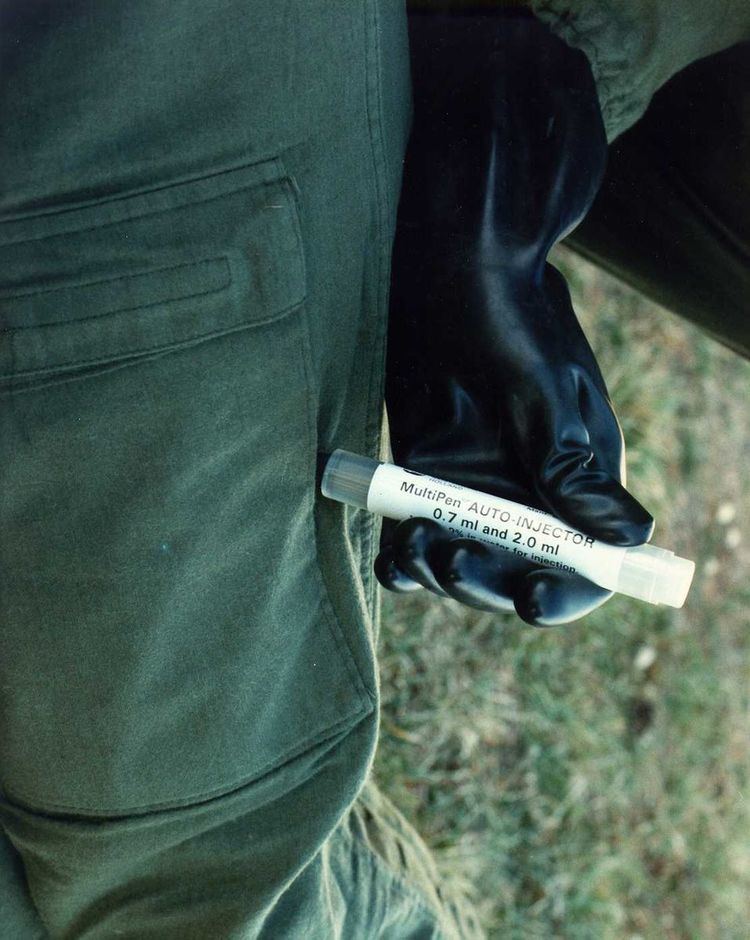 | ||
An autoinjector (or auto-injector) is a medical device designed to deliver a dose of a particular drug.
Contents
Most autoinjectors are spring-loaded syringes. By design, autoinjectors are easy to use and are intended for self-administration by patients, or administration by untrained personnel. The site of injection depends on the drug loaded, but it typically is administered into the thigh or the buttocks. The injectors were initially designed to overcome the hesitation associated with self-administration of the needle-based drug delivery device.
Design
The autoinjector keeps the needle tip shielded prior to injection and also has a passive safety mechanism to prevent accidental firing (injection). Injection depth can be adjustable or fixed and a function for needle shield removal may be incorporated. Just by pressing a button, the syringe needle is automatically inserted and the drug is delivered. Once the injection is completed some auto injectors have visual indication to confirm that the full dose has been delivered. Autoinjectors contain glass syringes, which can make them fragile and contamination can occur. More recently, companies have been looking into making autoinjector syringes out of plastic to prevent this issue.
Examples
Military use
Variants
A newer variant of the autoinjector is the gas jet autoinjector, which contains a cylinder of pressurised gas and propels a fine jet of liquid through the skin without the use of a needle. This has the advantage that patients who fear needles are more accepting of using these devices, the autoinjector can be reloaded, and a variety of different doses or different drugs can be used, although the only widespread application to date has been for the administration of insulin in the treatment of diabetes.
